By Maxime Toulotte, head of technical marketing, Nexans Subsea and Land Systems business group (SLS)
Offshore wind is enjoying a boom time, contributing more and more to the global energy transition with smarter operations and more powerful wind turbines. Europe is still the largest market, accounting for nearly 80% of global offshore wind capacity, while installed capacity is growing by around 30% year on year.
Most wind farms are currently constructed close to shore in relatively shallow waters, a technology that has well matured and is now firmly established. As the demand for more renewable energy continues to rise, the industry is now looking further offshore into deeper waters where wind availability is higher and more consistent.
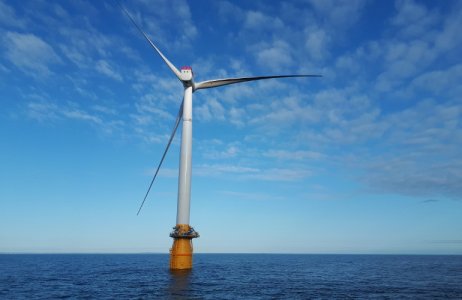 Oceans of opportunity
Oceans of opportunity
Until now, most wind power generation has utilized static power cables from turbines anchored to the seabed in 50 to 60 meters of water. However, wind turbines in deeper waters necessitate floating technology – wind turbines on floating bases anchored to the seabed. This is because the foundations for bottom-fixed wind turbines become very expensive to build and install in deeper waters. Floating wind turbines also require dynamic, high-capacity submarine cable systems to collect and export the power generated.
Offshore wind farms that could utilize larger floating turbines fall into two main geographic groups. The first group operates in water depths of 100 to 200 meters, satisfying locations such as the European Atlantic coast, the United Kingdom and the Norwegian North Sea. The second group could accommodate wind farms in waters five- to 10-times deeper, such as the Mediterranean or the U.S. West Coast.
Waves and currents subject the power cables that connect the turbines to the seabed to significant dynamic stresses. Therefore, these cables must accommodate all movements and loading from the ocean in relation to the floating platform plus its weight.
Building on strong experience in offshore oil and gas
Nexans has an advantage with its deep knowledge of the structural behavior of dynamic cables in umbilical projects for the offshore oil and gas industry. As such, it is one of a few companies with an established track record in both high-voltage submarine cable systems and dynamic cables and power umbilicals. Current development projects effectively bring the two disciplines together.
The decades of experience Nexans has gained from working on numerous oil and gas field projects has been invaluable in perfecting its manufacturing techniques. It also showed that further development work was needed to efficiently carry the high voltages of power that large floating wind farms will require to export. They will feature enormous turbines that will eventually reach power levels of around 20 MW, whereas the current output is in the range of 7 to 10 MW.
The high-voltage level needed for offshore wind farm export cables not only requires a larger cable, but it cannot tolerate any ingress of water or moisture into the insulation. It needs a water barrier, which, in static cabling, is accomplished by using a lead sheath extruded on the cable. Such a sheath cannot be used in floating offshore wind applications as it is unable to flex and withstand the dynamic movement causing fatigue cracking.
This limitation prompted Nexans to develop alternatives, such as a metallic foil or polymer sandwich, suitable for applying to cables many kilometers in length. This barrier needs to be thick enough to provide reliable protection but not so thick that it resists the cable’s movement.
Making this type of structural change to a known design will obviously affect other properties. Therefore, by taking a holistic approach to engineering design, Nexans covers various factors such as strength, flexibility, floatation and temperature regulation. Here, the predictive models built from decades of experience in the oil and gas industry are an invaluable data source for Nexans design teams.
An added benefit is that, at a negligible cost, Nexans can incorporate optical fibers within the dynamic power cables to enable end-to-end communication. This can give operators an early warning when any part of the cable suffers stress or experiences a spike in local temperature.
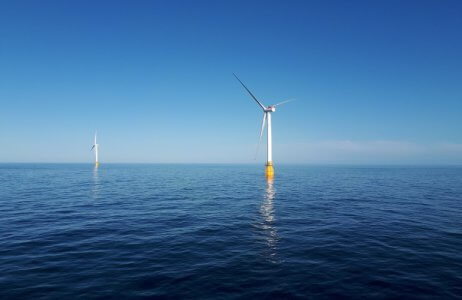 Supplying cables to the world’s first floating wind farm
Supplying cables to the world’s first floating wind farm
Norwegian energy operator Equinor, previously known as Statoil, was one of the first oil and gas operators to transition into floating wind farms. In 2009, it installed the world’s first full-scale floating turbine – the Hywind Demo – in the North Sea off the Norwegian coast. The unit is based on a 2.3-MW turbine with 82-m rotor diameter.
Some years later, in 2017, Equinor commissioned the world’s first operational floating wind farm – the Hywind Scotland Pilot Park, located 30-km off the coast of Aberdeenshire. In this project, the rotor diameter increased to 154 m while the overall height was set at 253 m. Having demonstrated the proficiency of its static and dynamic cables and associated accessories at the Norway site, Nexans was also contracted to provide the dynamic cable systems for this project.
With water depths varying between 95 and 129 m, the pilot farm covers approximately 4 km2 and is connected to the shore by a 30-km export cable. The average wave height is 1.8 m, while the average wind speed is 10 m/sec.
Featuring an installed capacity of 30 MW, it comprises five 6-MW turbines connected through an inter-array cable network that feeds into a single export cable carrying energy back to shore. The cable systems were engineered, manufactured, tested, transported, sealed off, prepared for pull-in and delivered in individual, installation-ready lengths.
A buoyant future
Since the Hywind project’s success, other floating turbines have been deployed, and more projects are in the pipeline. Equinor recently started construction of Hywind Tampen, the world’s first floating wind farm to power offshore oil and gas platforms.
Consisting of 11 wind turbines, the 88-MW project is intended to provide electricity for the Snorre and Gullfaks offshore field operations in the Norwegian North Sea. The development will be a testbed for further developing floating wind and exploring the integration between gas and wind power generation systems.
Technically, the expanding size and generation capacity of offshore wind turbines has contributed considerably to these offshore power plants’ attractiveness and commercial viability. And judging by expert projections, offshore wind is set to become a critical pathway for the global energy transition. According to the International Energy Agency (IEA), moving into deeper waters using floating – rather than fixed – wind turbines have the potential to meet the world’s electricity demand several times over by 2040.
 Maxime Toulotte is the Head of Technical Marketing of Nexans’ Subsea and Land Systems (SLS) business group, where he has the responsibility to develop and maintain relations with technical and engineering departments of clients and partners for subsea high voltage cables. SLS is a global business group delivering high voltage cables systems and umbilicals, and with long experience in turnkey export cable projects. Nexans has also delivered the dynamic export cables for the first offshore floating windfarm, Hywind, located off Scotland. Maxime has held several positions as Sales & Tender Manager and Lead Engineer for high voltage submarine cable system projects. Maxime holds a master’s degree in Electrical Engineering from the Grenoble Institute of Technology, France.
Maxime Toulotte is the Head of Technical Marketing of Nexans’ Subsea and Land Systems (SLS) business group, where he has the responsibility to develop and maintain relations with technical and engineering departments of clients and partners for subsea high voltage cables. SLS is a global business group delivering high voltage cables systems and umbilicals, and with long experience in turnkey export cable projects. Nexans has also delivered the dynamic export cables for the first offshore floating windfarm, Hywind, located off Scotland. Maxime has held several positions as Sales & Tender Manager and Lead Engineer for high voltage submarine cable system projects. Maxime holds a master’s degree in Electrical Engineering from the Grenoble Institute of Technology, France.
Filed Under: Featured

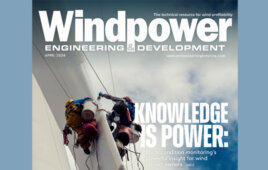

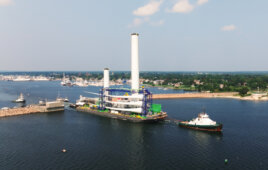
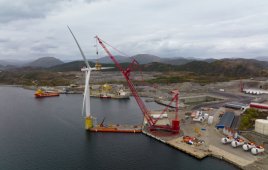
I have been installing cables umbilicals flex flowlines in up to 3000m for the past 20 years. Never had a problem. Maybe you need to utilise the correct personnel. There are lots of people like myself from O and G background who would like to cross over to renewables but we are just not made welcome!